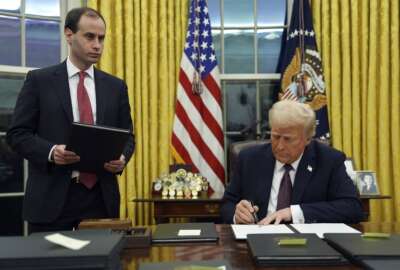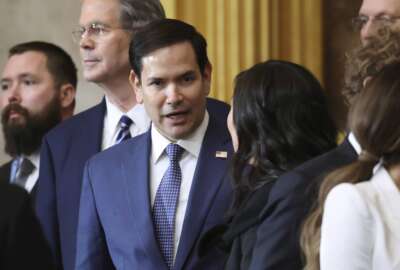
Insight by the Combined Federal Campaign of Southern California
Retirees and the CFC: Compassion & Leadership Endure Beyond Retirement
Federal employees receive an onslaught of information when they retire, much of it information about their annuity and benefits. But one thing that’s often...
This content is provided by the Combined Federal Campaign of Southern California.
Federal employees receive an onslaught of information when they retire, much of it information about their annuity and benefits. But one thing that’s often missing is information about their charitable contributions to the Combined Federal Campaign.
“I thoroughly read everything I was receiving when I was planning my retirement because I retired under what they call discontinued service retirement after the judge I worked for passed away,” said Dawn Stitt, a former employee of the Central District of California for the U.S. District Court. “I was so thorough trying to decide if I could retire at this time. But I don’t remember ever seeing anything that said that I could continue to give to CFC.”
In fact, Stitt wasn’t aware until very recently when a former coworker of hers informed her.
The Office of Personnel Management (the government agency that oversees the CFC) website notes in its FAQ section that retirees can make a one-time pledge to the CFC, which has always been its policy. In addition, it notes that since 2017, retirees also have the option to have contributions withheld from their annuity, much the way they did with their paychecks.
The CFC offers a tremendous variety of charitable organizations to donate to. The Office of Personnel Management estimates more than 6,000 charities participate in the CFC, working on issues ranging from meeting basic needs like housing and food, access to healthcare and important research, family supports, education, military and veterans causes, the environment, and animal welfare (among others).
“When I first started, my son was in Boy Scouts. So I pretty much gave to the Boy Scouts of America, because I figured that was a benefit to us also,” Stitt said. “And then, I would occasionally switch it up every couple years or so depending on that year and how much I was able to give, and then just looking through and finding things that meant something to me.”
And federal employees and retirees can trust that the organizations they’re donating to have been appropriately vetted.
“I remember still back in the time when they handed out booklets. And I recall that underneath each name, it told you a little bit about that the charities, if I recall correctly,” Stitt said. “It told you how much went to different parts, how much went to their overhead and how much went to this and how much went to that. So you felt a little more comfortable when you were giving.”
This information is now also available on CFC’s website and part of an easy to use charity search platform.
The campaign kickoff events, like everything in 2020, looked a little different than in previous years. The once-popular in-person book sales, chili cook-offs and other events designed to generate enthusiasm — and dollars — for the annual charitable giving campaign can’t happen this year, not in a pandemic. But the many federal volunteers from every agency are creatively finding ways to spread the word and invite others to join in and support the campaign in a year of great need.
Under more ordinary circumstances, CFC doesn’t just accept monetary contributions; federal employees and retirees can also volunteer their time. This year, many charities are providing virtual volunteer opportunities. For retirees, that can have the added benefit of helping them maintain a connection to the federal workforce community long after leaving the workplace itself.
“I retired fairly young, but right now, I don’t want to get another job, I don’t need to,” Stitt said. “So that is something I myself am going to look into.”
And that’s because for Stitt, the third major benefit she sees in contributing to the CFC is simply because it is fulfilling.
“People, retired or not, like to give to a charity,” she said. “Currently, I’m involved not just with the CFC but also with the board of a nonprofit organization. So, for me, it feels good to give back. It feels good to give to those people that need it. I mean, I haven’t even started exploring CFC; I’m sure there are new charities from when I was there as a federal employee, so I’m looking forward to looking into what is out there that I can continue to give to.”
For more information on retiree giving in Southern California, visit SouthernCalCFC.GiveCFC.org.
Copyright © 2025 Federal News Network. All rights reserved. This website is not intended for users located within the European Economic Area.
Related Stories




